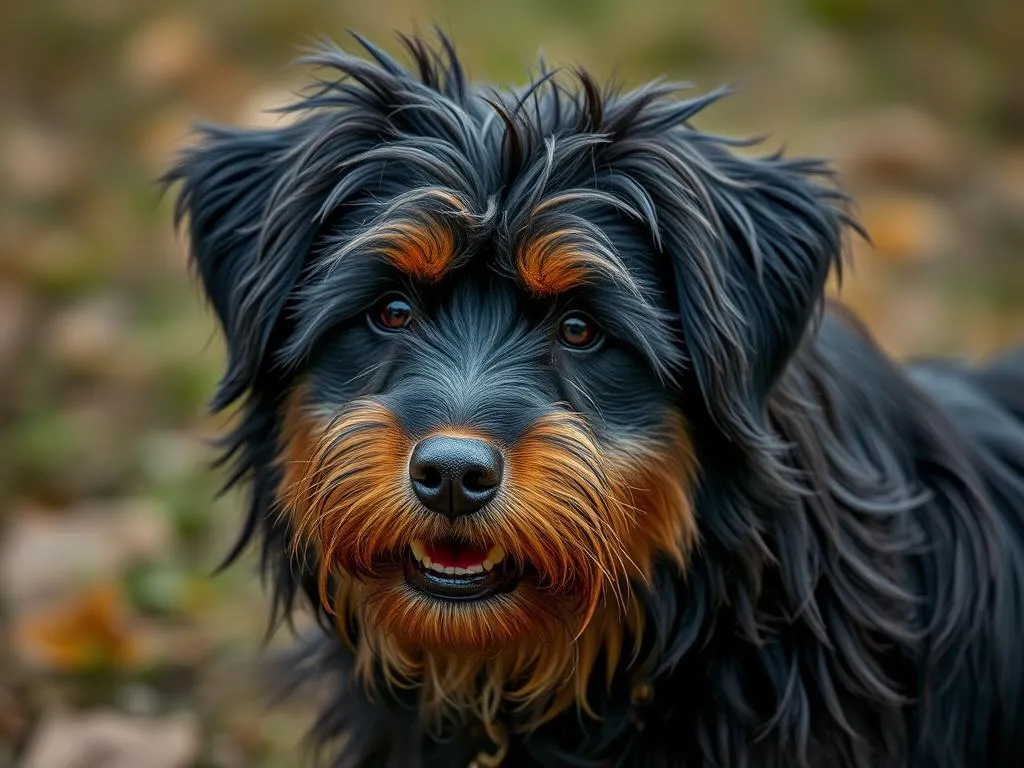
Introduction
When it comes to dog breeds, the variety is astonishing. Each breed has its unique traits, characteristics, and history, making it vital for potential pet owners to understand the differences. One breed that has gained considerable popularity in recent years is the Cockeranian, a delightful hybrid resulting from the crossbreeding of the Cocker Spaniel and the Pomeranian.
This article will explore the fascinating world of the Cockeranian, highlighting its unique characteristics, history, care requirements, and much more.
Understanding Dog Breeds
What are Dog Breeds?
Dog breeds are classifications that categorize dogs based on specific traits, including size, appearance, temperament, and purpose. Historically, dog breeding dates back thousands of years, with humans selectively breeding dogs for specific tasks such as hunting, herding, and companionship. This systematic approach has resulted in the diverse array of breeds we see today.
Importance of Breed Characteristics
Understanding breed characteristics is crucial for prospective dog owners. Key aspects include:
- Temperament: Each breed has distinct personality traits that can affect compatibility with families and lifestyles.
- Size and Physical Traits: Size can influence living situations, with smaller breeds often suitable for apartment living.
- Health and Longevity: Different breeds have varying lifespans and health concerns, which are essential considerations for responsible pet ownership.
Mixed Breeds vs. Purebred
Mixed breeds, like the Cockeranian, are the result of crossing two or more breeds. Purebreds, on the other hand, come from a long line of dogs of the same breed. Each type has its pros and cons:
- Mixed Breeds: Often healthier due to genetic diversity, may have unpredictable traits.
- Purebreds: Predictable traits and characteristics but may be prone to specific health issues.
The Cockeranian Breed
Origin and History
The Cockeranian is a relatively new hybrid breed that emerged from the blending of the beloved Cocker Spaniel and the playful Pomeranian. The Cocker Spaniel, known for its friendly demeanor and excellent hunting capabilities, has a rich history dating back to 19th century England. Meanwhile, the Pomeranian, a toy breed, has roots in the larger Spitz-type dogs and was bred for companionship. The combination of these two breeds has resulted in the charming Cockeranian, which exhibits traits from both parents.
Physical Characteristics
The Cockeranian typically weighs between 10 to 20 pounds, making it a small to medium-sized dog. The height generally ranges from 10 to 14 inches at the shoulder.
Physical traits often include:
- Coat Type and Colors: The coat can vary widely, often resembling the soft, wavy fur of the Cocker Spaniel or the fluffy texture of the Pomeranian. Common colors include black, brown, cream, and combinations of these.
- Distinctive Features: The Cockeranian commonly has large, expressive eyes, long ears reminiscent of the Cocker Spaniel, and a lively tail that wags enthusiastically.
Temperament and Behavior
The Cockeranian is known for its friendly and affectionate personality. Typical traits include:
- Playfulness: This breed is energetic and loves to engage in playtime, making them great companions for families.
- Social Behavior: Cockeranians are generally good with children and other pets, proving to be sociable and adaptable.
Their lively nature means they thrive in environments that provide ample opportunities for social interaction and play.
Caring for a Cockeranian
Diet and Nutrition
Providing a balanced diet is vital for the health of your Cockeranian.
- Recommended Diet Types: A high-quality kibble formulated for small to medium breeds is a solid choice. Some owners opt for raw diets, but this requires careful planning to ensure all nutritional needs are met.
- Portion Sizes and Feeding Frequency: Typically, two meals a day are recommended, with portion sizes depending on the dog’s age, weight, and activity level.
Exercise Requirements
The Cockeranian has moderate exercise needs.
- Daily Exercise: Aim for at least 30 minutes of activity each day, which can include walks, play sessions, and mental stimulation.
- Suitable Activities: Games like fetch, agility training, and even simple obedience training can provide excellent exercise and mental engagement.
Grooming Needs
Regular grooming is essential to maintain the Cockeranian’s coat and overall hygiene.
- Coat Maintenance: Brushing a few times a week helps prevent matting and controls shedding. Bathing should occur as needed, usually every few months.
- Nail Trimming and Dental Care: Regular nail trimming is crucial to prevent discomfort. Dental care, including brushing and dental chews, supports oral health.
Health Considerations
Being aware of potential health issues is essential for owners of Cockeranians.
- Common Health Issues: Some may inherit conditions from their parent breeds, including hip dysplasia, eye problems, and patellar luxation.
- Regular Veterinary Care: Consistent check-ups and vaccinations are vital to ensure your dog remains healthy.
Training a Cockeranian
Basic Training Techniques
Training your Cockeranian is crucial for a well-behaved pet.
- Importance of Early Socialization: Introducing your dog to various environments, people, and other animals at a young age helps develop a well-rounded temperament.
- Recommended Training Methods: Positive reinforcement is highly effective. Rewarding good behavior with treats and praise encourages learning.
Addressing Behavioral Issues
Like all dogs, Cockeranians can exhibit behavioral challenges.
- Common Problems: Issues such as excessive barking, digging, or separation anxiety can arise.
- Strategies for Correction: Consistent training, establishing routines, and providing mental stimulation can help mitigate these issues.
Choosing a Cockeranian
Where to Find a Cockeranian
When considering adding a Cockeranian to your family, it’s essential to choose the right source.
- Reputable Breeders vs. Adoption Centers: Look for breeders who prioritize health and temperament. Adoption centers can also be a fantastic option, offering loving homes to dogs in need.
- Red Flags to Watch For: Avoid breeders who do not provide health clearances or who have unclean living conditions for their dogs.
Cost of Ownership
Understanding the financial commitment involved in owning a Cockeranian is crucial.
- Initial Costs: This includes the purchase or adoption fee, along with necessary supplies such as food, toys, and grooming tools.
- Ongoing Costs: Regular expenses include food, veterinary care, grooming, and pet insurance.
Cockeranian in Popular Culture
Representation in Media
The Cockeranian has made its mark in media, appearing in various films and television shows as a lovable pet character. Their charming appearance and playful demeanor make them a favorite among filmmakers.
Social Media Influence
On platforms like Instagram and TikTok, Cockeranians have gained a following for their adorable antics. Owners often share their pets’ daily lives, showcasing their personality and charm, which contributes to the breed’s popularity.
Conclusion
The Cockeranian is a delightful hybrid breed that combines the best traits of the Cocker Spaniel and Pomeranian. With its affectionate nature, moderate exercise needs, and manageable grooming requirements, this breed can make an excellent addition to various families.
Understanding the unique characteristics and care requirements of the Cockeranian is essential for responsible pet ownership. The joy of sharing your life with a Cockeranian is indeed a rewarding experience that enhances family life and creates lasting memories.
In considering a Cockeranian, you’re not just gaining a pet; you’re welcoming a loving companion into your home.









